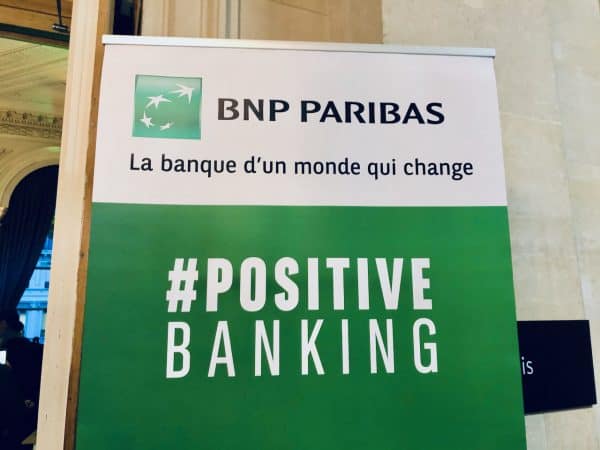BNP Paribas Securitizaties Services, part of BNP Paribas the bank – the largest bank in France and one of the largest banks in the world, has issued a statement explaining their point of view as to how blockchain (or distributed ledger technology – DLT) and tokenization will drive value in regards to fund distribution, the role of a Transfer Agents and digital securities.
BNP Paribas has been dabbling with blockchain technology for years now including digital payments, CBDCs, and digital assets in general. BNP Paribas has recently (2021) worked with Allfunds Blockchain to deliver a proof of concept on tokenization of a UCITS fund providing a better understanding of the digital asset ecosystem.
Paul Daly, Head of Distribution Products and Solutions, and Carole Michel, Fund Distribution Senior Global Product Manager at BNP Paribas Securities Services say interest in digital assets and blockchain “has the potential to be the most transformative technology in the fund industry by enabling digitization and tokenization of fund shares, reducing inefficiencies in fund distribution.”
The two explain:
“Fund houses rely on long and complex chains of distribution which make it difficult to build investor relationships and control distribution costs. Blockchain use cases represent an opportunity for fund houses to go direct to investors and expand their distribution network. Investors can now subscribe to a native digital or tokenized asset via a distributed ledger online and hold these fund tokens in electronic wallets that they own and operate, moving the industry closer to a self-service model. In addition to lower transaction costs, real time visibility, automation, and enhanced reporting with sharing of golden data are just some of the features that appeal to the buy and sell-sides. A shorter settlement cycle will increase liquidity and cash on chain will enable true delivery versus payment (DVP) between cash tokens and shares tokens, enhancing operational efficiency by eliminating cash reconciliation processes and chasing of payment.”
Additionally, blockchain will simplify AML/KYC processes as these will inevitably be embedded into smart contracts – a key feature of DLT. This will replace “off-chain decentralised AML/KYC process” ownership changes will be registered automatically, thus removing the need for analog services.
The duo state that the digital asset ecosystem will grow significantly over the next few years. In the near term, they predict the fund industry to adopt a hybrid model providing the option of subscribing via blockchain platforms or the traditional method. Establishment providers will need to adapt and BNP Paribas will support this transition.
They say that existing fund houses are not prepared for the transition and will need time to change to issue digital assets directly to investors via digital wallets. BNP Paribas reports that many of these groups are already working on the conversion to digital assets.
Beyond the clear cost savings, BNP Paribas believes there will be opportunities to revise business models and develop new services.
They share that institutional clients are moving from proof of concept to actual services and they are supporting clients via two models:
- Where a blockchain platform is a financial intermediary or a distributor is using blockchain technology. In Luxembourg, they collect the blockchain orders and manage them like orders coming from any other distribution channel with the same level of service. A fund opens a register under the name of the blockchain platform or the client/distributor which is managed through our standard distributor onboarding process. They are already collecting orders for Luxembourgish funds from the IZNES investment platform based in France and FundsDLT based in Luxembourg.
- Where some share liabilities are partially issued on a blockchain platform through their DLT integration service, they provide fund managers with an aggregated view including cash flow forecasts and other reports such as positions. They can confirm the aggregated number of shares in circulation and provide all orders on blockchain and traditional shares to the fund accountant to compute the net asset value and to the depositary to operate the required controls. With this model they can manage the cash settlement of blockchain orders between the main cash account of the fund and the fund’s cash collection account. They report they are already connected for French funds to the IZNES investment platform located in France and plan to connect to other existing market infrastructures deploying blockchain solutions.
Regarding regulation, BNP Paribas Securitization states that it is a fragmented market and not helpful but the end benefits are clear.
“It is important to note that we only focus on digital assets with a clear legal framework, allowing us to provide services to our clients with the requisite level of safety and protection.”
As for secondary transactions, they believe that a digital asset will be transferable in seconds, traceable, and able to hold smaller values. This should boost overall liquidity, in traditionally illiquid markets.
“In conclusion, we strongly believe there is a need for tokenization of shares/ funds in a global solution for the fund distribution value chain, to ensure reduced cost, quality, safety and real time data as well as simplifying operations and introducing efficiencies for clients.”


